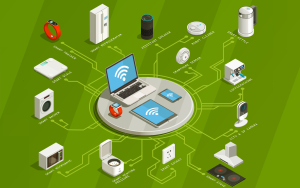
In recent research, Assistant Professor Omid Abari at UCLA has achieved remarkable advancements in advancing high-speed networking capabilities for Internet of Things (IoT) devices. His research encompasses the entire spectrum of IoT networks and systems, from the physical layer to the application layer. Abari’s research group specializes in developing cutting-edge software-hardware systems that facilitate widespread sensing, efficient computing, and wireless communication on a large scale. Their current research initiatives are currently centered on “mmWave networks for IoT” and “ubiquitous sensing with RFID.”
Looking ahead to the year 2030, it is projected that there will be 30 billion Internet of Things (IoT) devices connected to the Internet, enabling new applications such as digital twins. While these prospects sound exciting, the reality is that most of these IoT devices will operate at lower frequency bands of the wireless spectrum, typically ranging from a few hundred MHz (such as RFID and LoRa) to a few GHz (such as BLE and WiFi). As a result, there will be a growing strain placed on these low-frequency bands.
Enter millimeter wave (mmWave) – a network offering multi-gigahertz of unlicensed bandwidth , surpassing current allocations for both WiFi and cellular networks by over 200 times. In fact, 5G and 6G networks are powered by mmWave technology. Hence, mmWave is very attractive option for addressing the demand of billions of IoT devices. However, the hardware required to use mmWave is complex, expensive and power-hungry, which is not suitable for many low-power loc-cost IoT applications. Hence today’s IoT devices do not benefit from mmWave.
To overcome this challenge, Professor Abari’s group and their collaborators have created a novel design known as “mmPlug”. mmPlug is a plug-and-play module which is simple and energy-efficient. Most importantly, it can be easily connected to the antenna port of any IoT device, enabling it to operate in the mmWave band. mmPlug is compatible with different wireless technologies (such as WiFi, Lora, etc.) and does not require any modification to the circuit, firmware or communication protocols of the existing IoT devices. The technology would enable any IoT device to benefit from the advantages mmWave technology offers, such as high data-rate, low interference, and accurate localization.
This groundbreaking advancement is detailed in the paper, “Bringing Millimeter Wave Technology to Any IoT Device”, which will be presented later this week at the ACM MobiCom 2023. Bringing high-speed mmWave networks to any IoT device.
